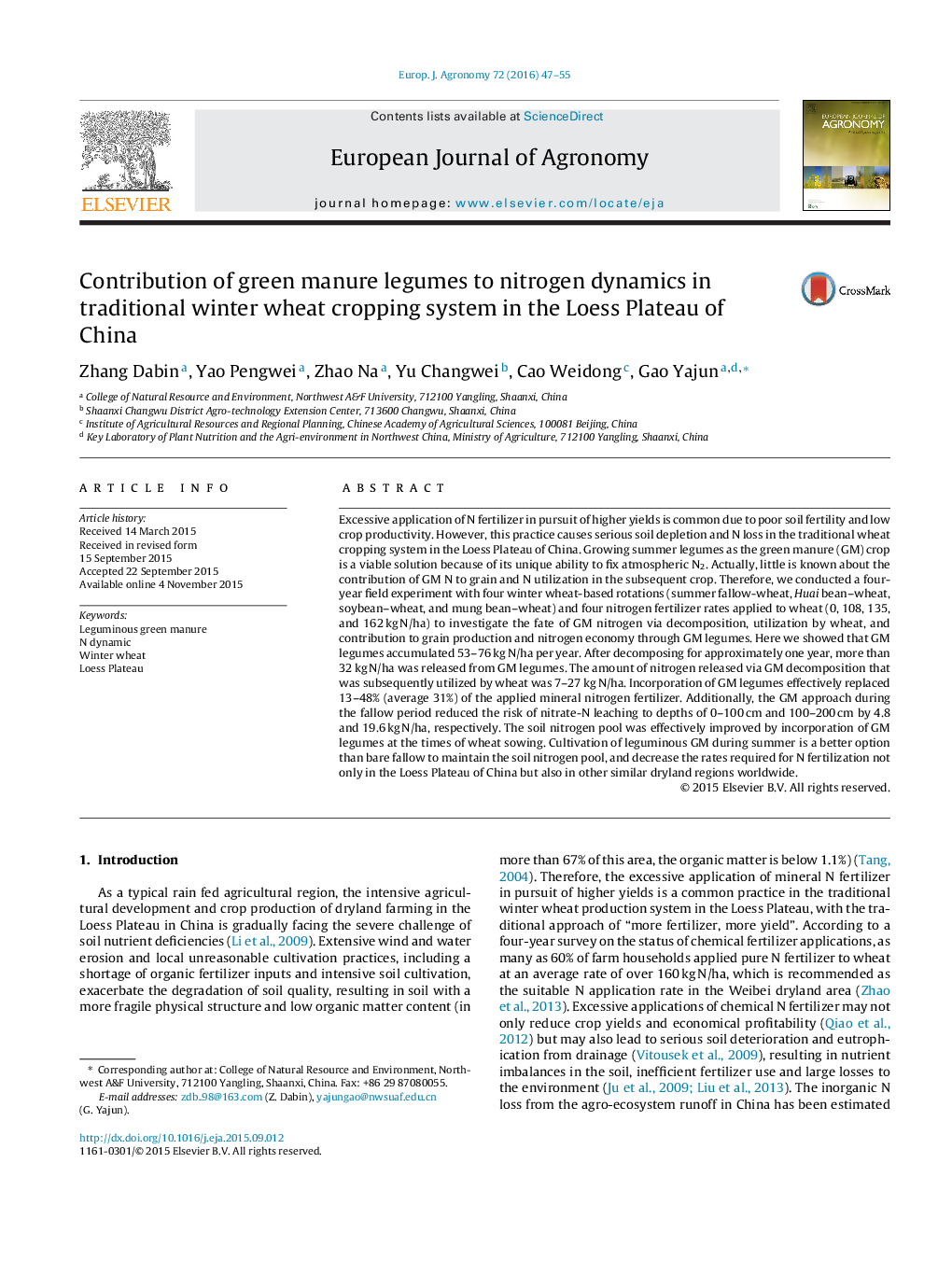| کد مقاله | کد نشریه | سال انتشار | مقاله انگلیسی | نسخه تمام متن |
|---|---|---|---|---|
| 4508710 | 1624453 | 2016 | 9 صفحه PDF | دانلود رایگان |
• Green manure legumes accumulated 53–76 kg N/ha each year.
• After incorporation for one year, more than 32 kg N/ha was released.
• Around 7–27 kg N/ha decomposed from green manure legumes was utilized by wheat.
• Green manure legumes reduced N fertilizer application by 13–48% (average 31%).
• Green manure legumes reduced the risk of nitrate-N by 4.8–19.6 kg N/ha.
Excessive application of N fertilizer in pursuit of higher yields is common due to poor soil fertility and low crop productivity. However, this practice causes serious soil depletion and N loss in the traditional wheat cropping system in the Loess Plateau of China. Growing summer legumes as the green manure (GM) crop is a viable solution because of its unique ability to fix atmospheric N2. Actually, little is known about the contribution of GM N to grain and N utilization in the subsequent crop. Therefore, we conducted a four-year field experiment with four winter wheat-based rotations (summer fallow-wheat, Huai bean–wheat, soybean–wheat, and mung bean–wheat) and four nitrogen fertilizer rates applied to wheat (0, 108, 135, and 162 kg N/ha) to investigate the fate of GM nitrogen via decomposition, utilization by wheat, and contribution to grain production and nitrogen economy through GM legumes. Here we showed that GM legumes accumulated 53–76 kg N/ha per year. After decomposing for approximately one year, more than 32 kg N/ha was released from GM legumes. The amount of nitrogen released via GM decomposition that was subsequently utilized by wheat was 7–27 kg N/ha. Incorporation of GM legumes effectively replaced 13–48% (average 31%) of the applied mineral nitrogen fertilizer. Additionally, the GM approach during the fallow period reduced the risk of nitrate-N leaching to depths of 0–100 cm and 100–200 cm by 4.8 and 19.6 kg N/ha, respectively. The soil nitrogen pool was effectively improved by incorporation of GM legumes at the times of wheat sowing. Cultivation of leguminous GM during summer is a better option than bare fallow to maintain the soil nitrogen pool, and decrease the rates required for N fertilization not only in the Loess Plateau of China but also in other similar dryland regions worldwide.
Journal: European Journal of Agronomy - Volume 72, January 2016, Pages 47–55
